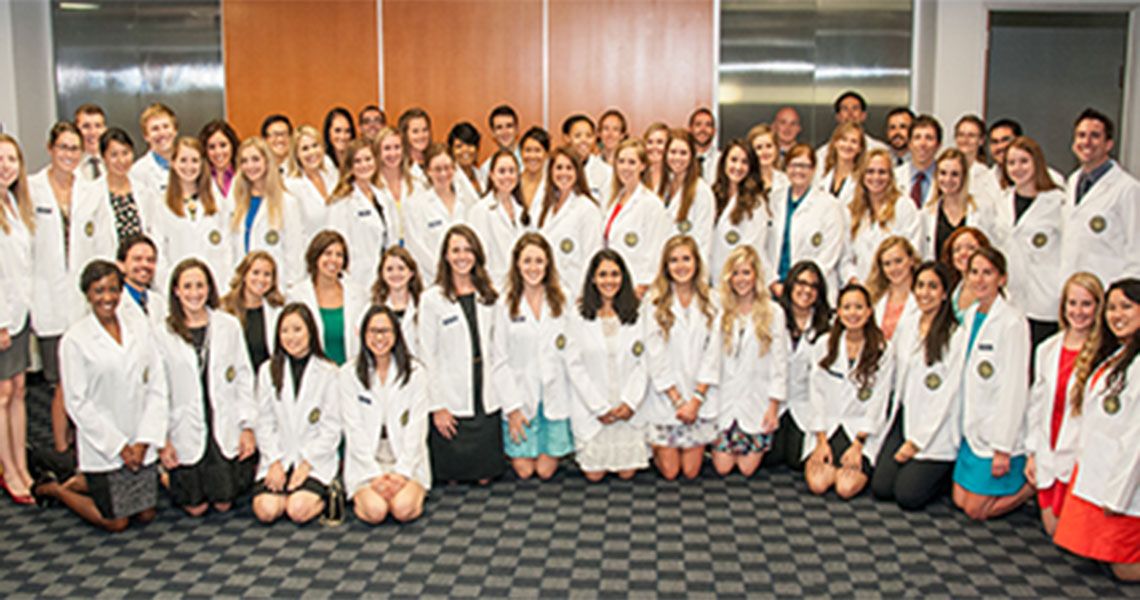For more than 100 years, the white coat has served as a prominent symbol of care, pride, prestige, and authority for physicians. However, until the mid-1920s, physicians wore black coats to dissect cadavers as a sign of respect for the dead. During this time, laboratory scientists wore beige coats. Scientists were well-respected by the public for connecting the certainty of science with modern medicine. In an effort to emulate scientists, physicians began to don beige coats. White later became the preferred color because it symbolizes cleanliness and purity.
“Today, the white coat ceremony has become a rite of passage across medical and health education training programs,” said Jacqueline Barnett, DHSc, PA-C, assistant professor of Physician Assistant (PA) studies at the GW School of Medicine and Health Sciences (SMHS), as she addressed the 69 students who make up the SMHS PA class of 2015.
Lisa Mustone Alexander, Ed.D., M.P.H., PA-C ‘79, interim chair of the Department of PA Studies and program director for the PA program, welcomed the new class and stressed the importance of wearing the white coat. “I want you to understand the privilege of wearing the white coat,” she said. “When you wear your student white coat, patients will still look to you for guidance, compassion, and hope.”
“You have entered a program that is ranked as one of the top in the country, and our program was recently reaccredited for seven more years,” said Joseph Bocchino, Ed.D., M.B.A. senior associate dean for health sciences at SMHS. “The easy part is behind us, the hard part is ensuring that we maintain the standard we have set,” he added.
“It’s the small things that really matter,” said keynote speaker William Soliz, PA-C, a major in the U.S. Army. “Those small things, like smiling and eye contact, will have a positive impact on your patients.” Soliz encouraged the new class to never forget their interpersonal skills. “It’s easy to forget about the patient when you’re so focused on making a diagnosis,” he said. Most importantly, Soliz told the new class, “You must always communicate with your patient. Tell them what you’re concerned about and how the procedure will affect them.”
In closing, the new class of PAs put on their short white coats with the help of second-year PA students and SMHS faculty, and then recited the physician assistant oath. Barnett encouraged the new class of PAs to not only embrace the pride and privilege that the white coat symbolizes, but also to demonstrate the leadership and responsibility that comes with wearing the white coat.



